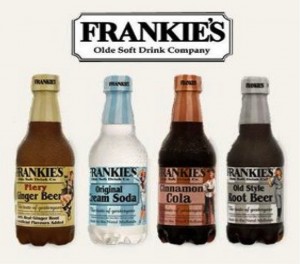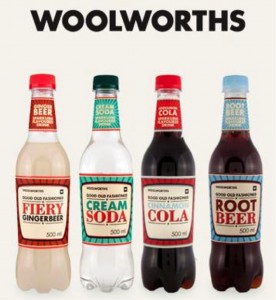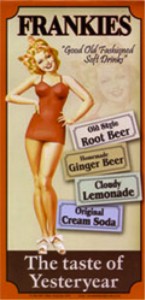Two related United States Bills were recently the topics of much controversy. Public outcries and widespread online protests were followed by an unprecedented Internet blackout on 18 January 2012. The Internet blackout was supported by the likes of Google, Facebook, Reddit and Wikipedia to name but a few. The blackout was not only supported by the Internet high-and-mighties, but also thousands of lesser known sites rallying their users’ support against the Bills. Such was the nature of the blackout that Wikipedia, for example, took its English-language site entirely offline on 18 January rendering its wisdom useless to millions of Internet users.
At the heart of all the controversy are two Bills on which the US Senate intended to cast its vote on 24 January 2012. However, the major public outcry criticising the Bills, (with the Internet blackout as the cherry on the proverbial cake), persuaded the US Senate to postpone the vote on the Bills. The Senate majority leader made the following brief statement:
“There is no reason that the legitimate issues raised by many about this Bill cannot be resolved…. I encourage him (i.e. the Senator acting as Sponsor to the Bill) to continue engaging with all stakeholders to forge a balance between protecting Americans Intellectual Property and maintaining openness and innovation on the Internet.”
The two Bills at issue are the Stop Online Piracy Act (SOPA) and Protect IP Act (PIPA). They are closely related in that both intend combating trade mark- and copyright infringement on the Internet imposing not only sanctions against so-called infringing sites but also obligations on Internet service providers, search engines, payment network providers and Internet advertising services.
Writing from the perspective of an IP practitioner in South Africa recognising the necessity of local law reform particularly on the protection of copyright, the two Bills are interesting and telling of a nation adamant to protect IP despite the constant challenges faced by technological advances.
PIPA is more limited in its ambit than SOPA. It also appears that it is the lesser controversial Bill of the two. In terms of PIPA, the US Government or a “qualifying Plaintiff” (i.e. applicable holder of Intellectual Property rights) can obtain injunctive relief against the domain name used by an Internet site dedicated to infringing activities, or against a Registrant of such domain name, or the owner or operator of such Internet site dedicated to infringing activities, to cease and desist from undertaking any further activity as an Internet site dedicated to infringing activities. PIPA also provides that Internet advertising agencies may not contract to render their services to infringing sites and, where such services have already been rendered, to take technically feasible and reasonable measures to prevent such further services and to cease making available advertisements for that site.
SOPA attempts to tackle a variety of issues which include:
- Granting injunctive relief against the Registrant of a domain name used by an infringing site;
- The online streaming of copyrighted works which infringe copyright; and
- Internet sites trafficking in inherently dangerous goods or services (including counterfeit goods).
Under SOPA a variety of obligations affecting third parties may arise once an injunction has been ordered against the Registrant of a domain name used by an infringing site. Such obligations include the requirement that:
- A service provider must take technically feasible and reasonable measures to prevent access by its subscribers to the infringing site;
- An Internet search engine must take technically feasible and reasonable measures to prevent the infringing site from being served as a direct hypertext link;
- A payment network provider must take technically feasible and reasonable measures to suspend its service from completing payment transactions to the infringing site; and
- An Internet advertising service that contracts to provide advertising to or for the infringing site must take technically feasible and reasonable measures to prevent its service from providing and making available advertisements to the infringing site.
On the streaming of copyrighted works (which include computer programmes, musical works, motion pictures or other audio visual work and sound recordings), SOPA includes the following sanction:
“Any person who wilfully infringes a copyright shall be punished as provided under Section 2319 of title 18, if the infringement was committed by the distribution or public performance of a work being prepared for commercial dissemination, by making it available on a computer network accessible to members of the public, if such person knew or should have known that the work was intended for commercial dissemination.”
A prohibition such as this causes major concern to a website such as YouTube, which no doubt on a daily basis facilitates the streaming of films, sound recordings and other works in which copyright may subsist.
The main objections to SOPA and PIPA included claims that the definitions in the proposed Acts are too broad and that it could be used against legitimate sites and businesses. A further claim is that the Bills are potential “job killers”, which is questionable particularly as SOPA has as its objective the promotion of prosperity, creativity, entrepreneurship and innovation by combating the theft of US property. Whatever the case may be, it is possible that many of the sites who participated in the Internet blackout (and probably more so even many who did not) are concerned with the possible implications which PIPA and SOPA may have to their businesses. Perhaps they should be reminded that the law looks at each case on its own merits and that if they are legitimate sites, they have nothing to fear.
Be that as it may, between Intellectual Property rights and maintaining openness and innovation on the Internet, it appears that democracy walked away as the winner.
Herman Blignaut
Author Bio:
Herman is a Partner of Spoor & Fisher, Pretoria and Fellow of the SAIIPL. He specialises in trade mark, copyright and unlawful competition litigation.







